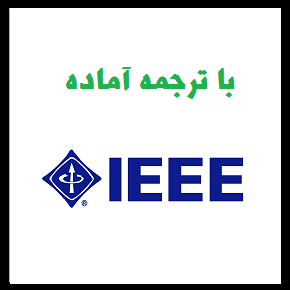دانلود رایگان مقاله ترانزیستورهای دو قطبی ساطع کننده نور پیوند ناهمگون (HBLETs) ساخته شده با هندسه انتشار جانبی – سال 2020


مشخصات مقاله:
عنوان فارسی مقاله:
ترانزیستورهای دو قطبی ساطع کننده نور پیوند ناهمگون (HBLETs) ساخته شده با هندسه انتشار جانبی برای انتقال بی سیم نوری در زمان واقعی
عنوان انگلیسی مقاله:
Heterojunction bipolar light-emitting transistors (HBLETs) fabricated with a lateral emission geometry for real-time optical wireless transmission
کلمات کلیدی مقاله:
HBLETs، هندسه انتشار جانبی، ارتباطات بی سیم نوری
کلمات کلیدی انگلیسی:
HBLETs – Lateral emission geometry – Optical wireless communications
مناسب برای رشته های دانشگاهی زیر:
مهندسی برق
مناسب برای گرایش های دانشگاهی زیر:
تولید انتقال و توزیع، مخابرات نوری
وضعیت مقاله انگلیسی و ترجمه:
مقاله انگلیسی را میتوانید به صورت رایگان با فرمت PDF با کلیک بر روی دکمه آبی، دانلود نمایید. برای ثبت سفارش ترجمه نیز روی دکلمه قرمز رنگ کلیک نمایید. سفارش ترجمه نیازمند زمان بوده و ترجمه این مقاله آماده نمیباشد و پس از اتمام ترجمه، فایل ورد تایپ شده قابل دانلود خواهد بود.
فهرست مطالب:
Abstract
Keywords
1. Introduction
2. Experimental
3. Results and discussion
4. Conclusions
Author contribution statement
Declaration of competing interest
Acknowledgements
Appendix A. Supplementary data
Research Data
References
قسمتی از مقاله انگلیسی:
1. Introduction
Optical wireless communications possess several promising features such as high data transmission rates and reduced power and mass deployment requirements. These techniques are increasingly critical for relieving the continuously expanding data volume in conventional radio-frequency (RF)-based links (e.g., Wi-Fi) [1]. Compared with other optical wireless links, light-emitting diode (LED)-based optical wireless links offer benefits of license-free and unregulated bandwidth in the visible to near-infrared wavelengths, immunity to electromagnetic interference, network security and low system cost, making they more suitable for co-use with Wi-Fi in Internet of Things (IoT) applications or 5G networks [2,3]. However, LED transmitters suffer from a slow dynamic response due to their parasitic resistance–capacitance elements or nonoptimized epistructure design (which causes increased carrier lifetime), which will significantly restrict the transmission performance of such optical links. By shrinking the device size to a few 10-μm, an orthogonal frequency division multiplexing (OFDM)-based bi-directional optical link with respective downlink and uplink data rates of 416 Mbps and 165 Mbps has been proposed using an integrated optical transceiver composed of a transfer printed micro-LED transmitter on the fluorescent concentrator and an avalanche photodiode (APD) [4]. Using a strain-compensation scheme to control the polarization field of InGaN LEDs, the decrease in carrier lifetime reflects an increased speed of up to 117 MHz for blue InGaN/GaN LEDs under 0.14% compressive strain [5]. Shen et al. reported that the presence of amplified spontaneous emissions in 405 nm superluminescent diodes (SLDs) grown on a semipolar GaN substrate helps increase light output power and 3-dB modulation bandwidth (f3dB ¼ 807 MHz) [6]. In addition, an SLD-based on-off keying optical link can transmit data at a rate of 622 Mbps with a bit-error rate of 4 � 10 4 .



